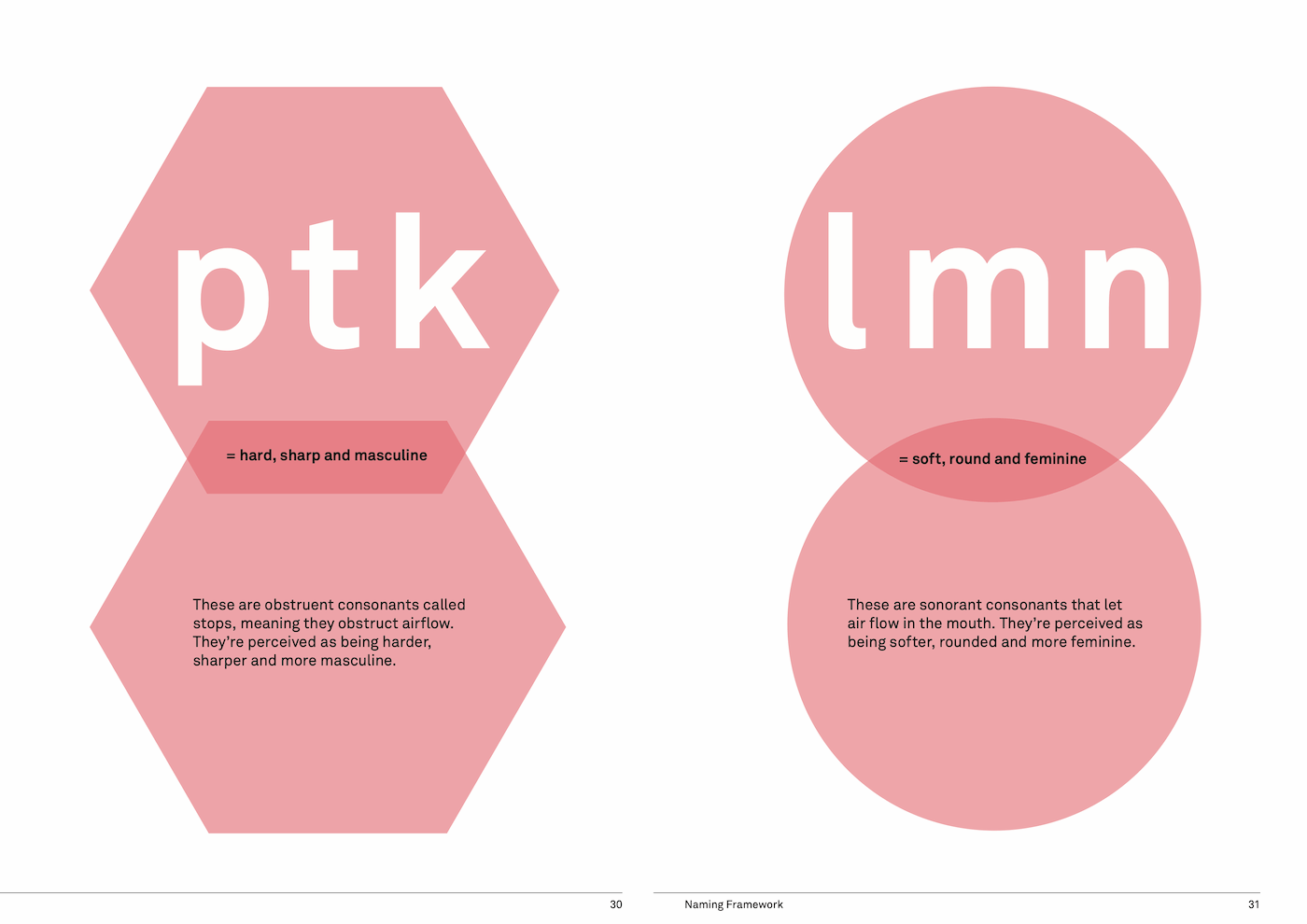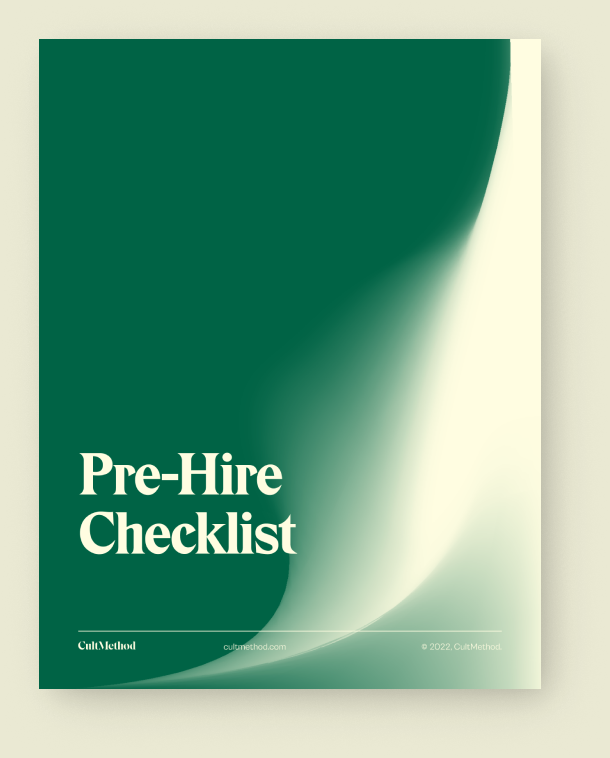Table of contents
Few people would deny how incredibly impactful names are in everyday life.
Expectant parents often spend months thinking about (or sometimes agonising over) names for their baby. It is widely understood that the name you choose for your child will stick with him forever:
Choose wisely, and you set him up for success. Choose foolishly, and he’ll face bullying or have a hard time getting job offers later in life.
If you’re unlucky, he might even come back to exact violent revenge like the boy named Sue…
Should you care about this?
Most business owners understand that naming matters. But despite this, most small businesses never think to consult an actual expert about it.
I can’t tell you how many times clients are surprised when I bring up the possibility of going through a more rigorous naming process to make sure we land on the right name. Most haven’t even considered that this is something that they don’t have to do alone.
I’ve talked to far too many business owners that tell me they’ve spent tens of thousands of dollars acquiring .com versions of their brand name—without spending a dime on figuring out if the name is right for them in the first place!
There’s a huge disconnect there.
The fact is: Your brand name is really, really important. More so than any other individual element of your brand identity.
Why? Because it’s more permanent than any other individual element of your brand identity. Once you’ve established yourself in the market, changing your name can be a really painful (and costly) process.
So it goes without saying that it’s worth spending some time and money on getting it right from the get-go.
The impact of brand names
We know naming is important not just in business, but in all areas of life: if your name is easy-to-pronounce, people will like you more. If you have a common name, you’re more likely to get hired. If your first name is short, you’re more likely to be a c-suite executive.
In the world of brands, the benefits of a good name are many: customers are more likely to like it and remember it, and therefore also buy it. There are even studies that show simple and short brand names perform better on the stock market.
As I was preparing for this article, I looked for rigorous, scholarly research into the effect naming plays on the success of brands. Unfortunately, I discovered that such research is hard to come by, so in lieu of it I’m going to use some good old-fashioned common sense here:
Clearly, it’s possible for brands to succeed even if they have terrible names. I know because I’ve had several clients like that, and even though we ended up renaming them, they made money even before working with us.
For example: SMR Delft, a Dutch client of ours. “SMR” stood for “Smart Manufacturing & Robotics.” “Delft?” The city they were based in (which was confusing, because as a high-end consultancy they worked with clients from all over Europe, not just in Delft). We renamed them to Factorion.
Another example: J&M Floorcoverings Pty Ltd, an Australian flooring shop. They grew into a 7-figure company without any marketing (unless you count a listing in the yellow pages). When the business was passed on by the founder to his son, we renamed them to Creme.
So, just like the boy named Sue in Johnny Cash’s story grew up to be a tough SOB, it’s clearly possible for brands to succeed in spite of their bad names. But on the flip side, there are brands whose level of success is difficult to imagine without their name.
Apple, for example.
The story behind the Apple brand is marketing mythology. Some stories have it that “Apple” refers to Isaac Newton’s theory of gravity, others claim it’s a reference to Genesis.
In fact, the real story (behind the name at least) is not nearly as fantastical. But it’s interesting.
Here’s the story, as told by Apple’s co-founder Steve Wozniak:
“It was a couple of weeks later when we came up with a name for the partnership. I remember I was driving Steve Jobs back from the airport along Highway 85. Steve was coming back from a visit to Oregon to a place he called an “apple orchard.” It was actually some kind of commune. Steve suggested a name – Apple Computer. The first comment out of my mouth was, “What about Apple Records?” This was (and still is) the Beatles-owned record label. We both tried to come up with technical-sounding names that were better, but we couldn’t think of any good ones. Apple was so much better, better than any other name we could think of.” (Source)
Apparently, the duo also considered some other potential names, such as:
- Executex
- Matrix Electronics
Now, I don’t know about you… But I simply can’t imagine a world in which a company called “Executex” or “Matrix Electronics” reaches the icon status of Apple, even if everything else remained the same.
Types of brand names
There are a dozen different ways to categorise brand names. In truth, I’m not sure how useful they are (after all, they provide very little actionable information), but I’m including them down below for people who want to have a vocabulary to describe brand names with.
The following types of names are from Alina Wheeler’s comprehensive book, Designing Brand Identity:
Founder names
You don’t have to look very far to find brands named after their founders: Ralph Lauren, Heinz, Ben & Jerry’s, McDonald’s, and literally every law firm ever. Founder names are generally easier to trademark.
In my opinion, there are essentially two types of founder names: the traditional kind that uses the founder’s last name (or that combine last names in partnerships), popular with firms established in the 1900s. These seem to be most common with luxury brands (Gucci, Chanel, Burberry, and so forth) and B2B firms (McCann, Ogilvy, Latham & Watkins, Baker McKenzie, etc).
These traditional names work well if you want to establish a sense of heritage and tradition, because they were most popular during the 1800s and the first half of the 1900s. Ideally, your last name should sound glamorous or WASPy and be easy for people to pronounce and spell. My last name—Persson, pronounced Pearson in English—would not be ideal for this reason, but something like Pierce & Pierce would.
The other type of founder name is the more modern iteration, embodied by for example Ben & Jerry’s. It uses first names rather than last names, and comes across as more friendly and approachable.
A lot of startups and spin-off brands targeting millennial and zoomer audiences use first names in order to “humanize” themselves. For example, Goldman Sachs’ spin-off bank Marcus gets its name from the founder of the master brand, Marcus Goldman.
Dave, another fintech startup, has gone the same route as Marcus, trying to humanise their brand with a first name. The difference is that their name comes from the biblical story of David & Goliath, not any of the founders.
And that brings us to the next category of names.
Metaphorical names
Metaphorical names reference things, places, people, animals, processes, mythological names, or even foreign words that allude to an important brand attribute.
In Dave’s case, it’s a reference to the story of David & Goliath (Dave is a fintech startup that helps you fight the big banks, in case you didn’t know). And there are lots of other really well-known brands with metaphorical names:
- Nike (the Roman goddess of victory)
- Tesla (Nikolas Tesla, an electrical engineer who invented a bunch of technologies that are far beyond my paygrade)
- Amazon (suggesting the sheer scale of the store)
- Patagonia (which brings to mind “romantic visions of glaciers tumbling into fjords, jagged windswept peaks, gauchos and condors”)
… just to name a few.
Thanks to their originality, metaphorical names are easier to trademark than other types of names. Another huge benefit is that these names leave room for expansion and growth because they are very seldom tied to a specific value proposition or product category.
I’ve gotta admit: I’m a sucker for a good metaphorical name. They’re a ton of fun to brainstorm, and can really add depth to your brand if you get them right.
At CultMethod, I’ve named a high-end flooring showroom “Creme” to suggest the best of the best, something premium—and to bring to mind the color of most carpets. I’ve also named a smart robotics consultancy “Factorion,” which references both mathematics (through its literal meaning) and industrial qualities (being that it basically contains the word “Factory”).
However, if you go this route, make sure it’s still a good name even if someone doesn’t “get” what it means.
Descriptive names
Descriptive names literally describe what your business does. Think Toys ‘R’ Us, Discount Tires, Whole Foods, and General Motors, or simple one-word names like Match.com and Ancestry.com. The benefit is obvious: it’s immediately clear to people what you do.
Of course, a very descriptive name is less likely to stand out and be remembered, especially if others in your industry also have adopted descriptive names. Recently, I spoke to a Dutch business owner who explained that he realised he needed to rebrand his business (which was as descriptive as can be) when he started getting support requests from customers of his similarly-named competitors.
Another major disadvantage of descriptive names is that they can restrict growth and make it very difficult for you to diversify or pivot your business model further down the line.
Acronym names
Acronyms are difficult to remember and difficult to copyright. Most well-known brands that use acronyms today actually started out with their full names spelled out (for example IBM, KFC, and MoMA). You shouldn’t start out with an acronym—that’s silly—but if you’re looking at updating an otherwise successful brand, an acronym can be a good way to do so without sacrificing too much brand equity.
For example:
International Business Machines (zzz, dinosaur brand) -> IBM (kind of stale and corporate, but a hundred times better than the alternative)
Kentucky Fried Chicken (a surefire way to contract a coronary heart disease) -> KFC (wow, I don’t have to think about how the stuff I’m eating is slowly killing me!)
So sometimes, acronyms aren’t terrible.
Invented names
Fabricated names come in many different forms. They can be amalgamations of actual words (like Pinterest), suggestive of a real word (like Verizon), or completely made-up (like Kodak, Spotify, and Häagen-Dazs).
Keep in mind that one major factor of memorability is meaning. Names that convey meaning are more likely to be remembered than completely fabricated ones.
With that said, invented names do tend to be easier to copyright, and are obviously going to be more unique than most. But please make sure it doesn’t sound awful (like Blellow, a now-defunct social network).
Magic spelling
Some brands just alter the spelling of a word, and use that as their brand name. Examples include Flickr and Tumblr. The main reason to do this is that the name would otherwise be unavailable.
Of course, magic spelling comes with a very serious and obvious downside: people will think your name is spelled in a way that it actually isn’t.
What makes a name “good”?
Okay, so we’ve covered the main name categories. Like I mentioned earlier, I don’t think they provide all that much actionable information. No one type of name is necessarily inherently better than another—it all depends on the context.
Which begs the question: what makes a brand name “good”?
I think there are a few criteria which are useful for judging your brand name. They all basically boil down to “alignment with overall brand strategy and business objectives”:

Meaning & associations
First and foremost, all names have some kind of meaning or association, even ones that seem totally random.
It should have positive connotations, and those positive connotations should be aligned with the image that you want to establish:
If you’re naming a fine dining establishment with white tablecloths, the name should probably sound somewhat fancy, like The Ledbury, and perhaps even foreign, like Le Gavroche. If you’re naming a fast-casual restaurant, maybe it should sound fun and informal, like Two Forks.
The associations that your name carries help frame how consumers evaluate your brand.
Availability
This should go without saying, but your brand name needs to be available. Not just as a domain name (which is what most people think about), but as a trademark.
You can register your name as a words-only trademark, which seems to be what trademark attorneys generally recommend, as it gives you the broadest possible legal protection.
You can find a searchable international trademarks database on WIPO’s (World Intellectual Property Organization) website: WIPO database
If you’re in the US, you can search for trademarks here: USPTO database
And, if you’re in the EU, you can search for trademarks here: EUIPO database
Far less important, but not insignificant, is domain name and social media availability (it’s less important because you can add modifiers, like teslamotors.com for Tesla and steampowered.com for Steam). You can check that all in one place here: Namechk
Practicality
Beyond meaning and availability, you need to make sure that your name is practically sound. That means it needs to be easy to pronounce, easy to spell, and easy to remember. Those three are non-negotiable.
You should think about how the name looks, visually. Does it lend itself to a nice-looking visual representation (in the shape of a wordmark)?
Also, there are other factors you should consider depending on the context. As a general rule of thumb: you want your name to set you up for future growth and change. A name that limits you in terms of geography or product/market category is probably not a good one.
Great beats unique
Finally, there’s one thing I want to impress on you: great beats unique. What I mean by that is that it’s more important that you find a great name that works for your business, than a completely unique name.
James Greenfield, Creative Director at Studio Koto, relates how they named a service that gives East African farmers access to valuable information about farming. The name they came up with was WeFarm.
A week before launch, a large mobile games company launched an online game with the same name. Despite this, they stuck with it. Greenfield explains: “It’s important to focus on a great name that works and not worry that someone else is using that word in some other part of the planet.”
Linguistic considerations (man, so much to keep in mind!)
We’ve already covered the semantic aspects of naming. But names also belong to the domain of linguistics. So it follows that there are some aspects of linguistics that you’ll want to consider.
Now, I know enough about linguistics to be an effective namer, but by no means am I a linguistics PhD. I’m inevitably going to get some things wrong, or simplify what I’m sure are very nuanced ideas and concepts.
My goal is not to give you an academic understanding of linguistics; it’s to equip you with the sort of tools that may be useful when naming your company.
Without further ado, here’s what I know about the linguistics of naming:
Phonetics
“Phonetics” is basically a fancy way of saying “the way it sounds.” Some things you need to consider about how your name sounds:
- Does it strike a good balance between consonants and vowels?
- Does it have good rhythm?
- Do people place the stress in the same place?
Consider the Coca-Cola name: it alternates between consonants and vowels, and its rhythm flows almost musically.
Poetics
Poetics is the art of writing poetry. Literary devices like alliteration, repetition, and rhyme tend to be more memorable, and they also influence how your name is perceived. For example, the alliteration of names like Dunkin’ Donuts and Burt’s Bees, and the rhyme of Nutter Butter and HobNob help create an informal and friendly impression.
Phonosemantics
Phonosemantics is closely related to phonetics. In plain English, we would refer to it as “sound symbolism.” Basically, different sounds have associated visual and tactile properties.
These associations can be language-specific. For example, the phoneme “gl” is used in glimmer, glisten, glow, and glitter—so a name that starts with “gl” is more likely to make you think of something shiny. “Sl,” on the other hand, is used in slippery, sliding, and slithering, so a name that starts with “sl” is more likely to evoke wet imagery.
Other phonosemantic associations are universal, and work across languages. For example, letters that obstruct airflow (like “p,” “t,” and “k”) are perceived as hard, angular, and masculine across cultures, whereas letters like “l,” “m,” and “n” are perceived as soft, round, and feminine.
Front vowel sounds (“front” meaning your tongue goes to the front of your mouth to make them) such as are perceived as representing something smaller in size, whereas back vowel sounds are associated with larger objects. Front vowel sounds include “ee” as in “teen,” “i” as in “ring,” and “y” as in “my.” Back vowel sounds include “oo” as in “root,” “a” as in “father,” and “o” as in “core.” The mouse squeaks, but the lion roars.

I wouldn’t get too stuck on the phonosemantic qualities of your name. Just make sure whatever properties your name has, they reinforce your brand attributes (think in basic terms of masculine vs. feminine, big vs. small, hard vs. round). Here’s what the research says:
“Participants preferred brand names more when the attributes connoted by the vowel sounds (e.g., small, sharp) were positive for a product category (e.g., convertible, knife), but they preferred the same names less when the attributes connoted were negative for a product category (e.g., sport utility vehicle, hammer).” (Source)
Visual considerations
Your name isn’t just going to be spoken; visual expression is inevitable. We already mentioned this briefly, but I want to break it out into a section of its own because I think it does matter (although it’s not a non-negotiable by any means).
Basically, when you look at your name, does it look good? Is it easy to read?
Here’s what Naresh Ramchandani, partner at the world-renowned brand studio Pentagram, has to say about the visual qualities of names:
“Names that have something interesting or attractive about their letterform also have good visual potential. I’m thinking MOOD with its circles and curves for a perfume, or Dignify with its two nice dots for an over-60s face cream. Don’t give a graphic designer an abstract name with awful letter forms and expect them to do a good wordmark or logo, or to be happy.”
Naming systems
If you’re naming a product, it’s a good idea to think about how the name can be extended into a more comprehensive nomenclature, allowing you to name other products in the future. Think: iPhone, iMac, iPad.
For example, if you’re an app developer you might name your habit-building app Carrot (humorous, relevant to value proposition), and then launch a spin-off time-tracking app that you name Parsnip (memorable, related to better-known product).
How do you come up with a good brand name?
The way I see it, there are basically three different ways to come up with a good brand name. They are:
- Luck/creative genius/divine inspiration
- Wild, unstructured brainstorming
- Following a process-driven framework
Your temperament is probably going to determine which you are more likely to choose.
Stanley Kubrick, for example, kept a list of “titles in search of a script”—for him, the names came to him before the actual film ideas.
But most of us don’t have the luxury of waiting around for inspiration to strike. So that leaves us with two options:
Wild brainstorming or a process-driven framework. Personally, I’m a firm believer that the best, most consistent results come from following a tried-and-true process.
“The best naming projects began by laying out objectives, determining what the name must convey… and understanding what message [it] must communicate.” — Wordcraft: The Art of Turning Little Words into Big Business (Source)
But there are dozens of different naming processes. All of the major naming firms have their own proprietary way of doing things: there’s the Wolff Ollins process, the Lexicon process, the NameLab process, and so on and so forth…
So that begs the question: which process should you follow?
Personally, I find the process that Alexandra Watkins lays out in her fantastic book, Hello My Name is Awesome to be the most practical one. It doesn’t overcomplicate the process, but still covers all the most important bases of naming. Basically, the process looks like this:
1. Create your creative brief
- Goal of project
- Brand positioning
- Consumer insights (people’s behaviors, not just preferences)
- Target audience
- Competition
- Desired brand experience
- Brand personality (5–12 adjectives)
- Words to explore
- Themes/ideas to avoid
- Domain name modifiers (if the basic .com isn’t available)
- Name style likes
- Name style dislikes
- Acid test: how the new name would be used in a sentence
2. Start brainstorming
Kick off the brainstorming process by reviewing your creative brief, and then coming up with 12 words that you like and that are related to your brand. Keep in mind, at this point, you are not necessarily looking for “complete” names—just word-sparks that you can continue to build on.
Next, you want to hit up an online thesaurus and start looking up the words you came up with. Hopefully, that should give you some more interesting words to consider. “Cold” might turn into “Arctic,” for example.
You might also want to look up idioms and clichés that use these types of words. For example, going with the example of “cold,” you might come up with “cold as ice,” “cold turkey,” “cold feet,” and so on.
Next, consider popular culture. Brands appropriate pop culture phenomena all the time. Look up movies, books, and songs with titles related to the words you’re looking for.
Once you have a decent list of words and phrases, start playing around with them: bend them, combine them, add things, take things away—basically, have fun! At this point, some strong name candidates should begin to emerge from the word soup.
3. Find the best names
Now, it’s time to narrow down the selection and get ready to make a decision!
Alexandra Watkins has developed a really great way to “score” names. It’s called the SMILE/SCRATCH test (because names should make you smile, not scratch your head).
SMILE if your name has the following winning qualities:
- Suggestive (evokes a positive brand experience)
- Meaningful (your customers “get it”)
- Imagery (visually evocative to aid in memory)
- Legs (lends itself to a theme for extended mileage
- Emotional (resonates with your audience)
SCRATCH it if it has any of the following deal-breakers:
- Spelling-challenged (looks like a typo)
- Copycat (similar to a competitor’s name)
- Restrictive (limits future growth)
- Annoying (hidden meaning, forced)
- Tame (flat, descriptive, uninspired)
- Curse of Knowledge (only insiders get it)
- Hard-to-pronounce (not obvious, unapproachable)
So basically, get rid of any names that have clear deal-breakers, and score the rest of them based on how many out of the five “SMILE” attributes they have.
Then, use the acid test from your creative brief: how might people use the name in a sentence? Does it sound okay? It makes sense to “google something,” but if Apple had a search engine it wouldn’t make sense to “apple something.” Even great names can fall flat in some scenarios.
At this point you should have a clear favourite: a name that has all the qualities that you look for in a name. Don’t get too attached to it yet though. You still have to make sure you can register it as a trademark. (I covered how to do this earlier in the post.)
Chances are at least a few of the names that you really like are already going to be claimed. That’s life. Just go with the next best one if your top candidate is unavailable.
Do you have to like it?
No! Absolutely not!
Sure, it doesn’t hurt if it’s love at first sight. But most names aren’t. Especially if you’re rebranding and feel an emotional attachment to your previous name.
I think Glynn Britton, as quoted in Neil Taylor’s naming book The Name of the Beast: The Perilous Process of Naming Brands, Products and Companies puts it well:
“Brand names are funny. What you thought about them at first isn’t what you think about them now. Many of them take on new meanings as a result of years of personal experience and marketing effort… So, in order to assess a potential name, you have to try and project forward five years… You need to understand if the name has longevity, or will it quickly date.” (Source)
When you choose your brand name, keep your ideal customer in mind and focus on what’s right for your brand, not what you personally like or dislike.
Closing thoughts
Remember, your business name is going to be the most permanent aspect of your brand identity. It’s a lot easier to change colors, or a logo, than it is to change your name (even though sometimes it is necessary, especially if you chose a bad name to begin with).
It’ll go on social media, on your website, on products, letterhead, and business cards. You will say it out loud over and over when people ask you what you do.
A unique business name that works has the power to attract the attention of potential customers and tell a vital part of your story. A not-so-great brand name may miss the mark, but worse yet can stymie your business and make you cringe for years to come.
The struggle to find the name that will anchor your business is real. If you are at your wit’s end, take comfort in the fact that you are far from alone (and consider shooting me a message—I might be able to help).

Jon Persson
Jon Persson

Hiring a designer? Grab this.
My Pre-Hire Checklist gives you valuable tips to consider before hiring an identity designer.


